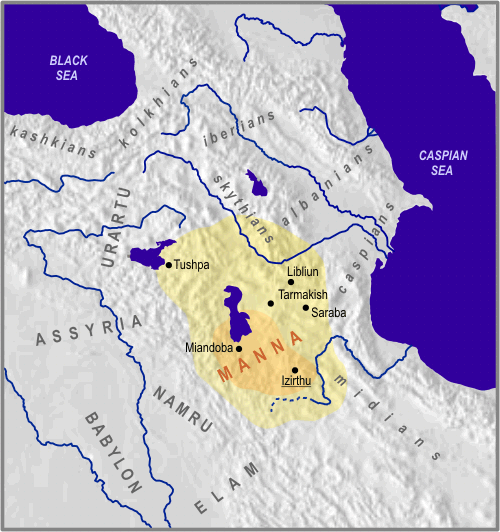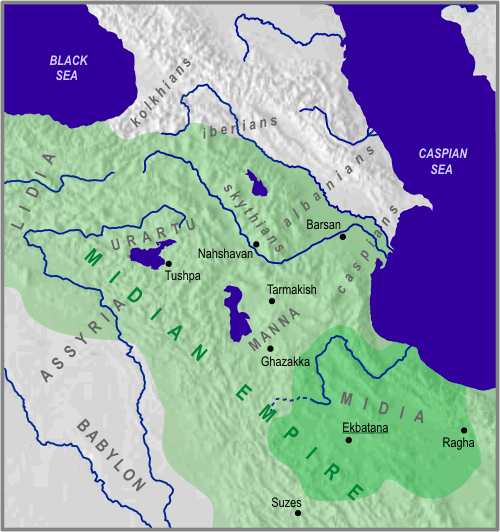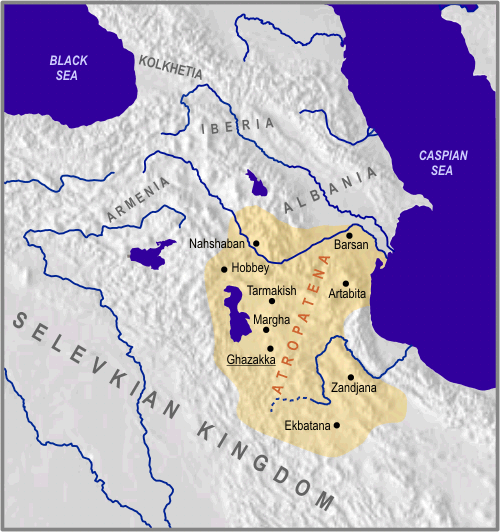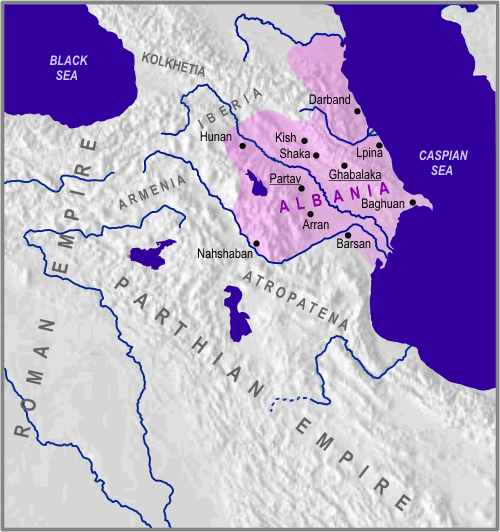
|
Manna (Manai, Mana)
One of the most ancient states of the East (X-IX c. BC). The name of Manna was first mentioned in 843 BC in cuneiforms by the Assyrian czar Salmanasar III, when the state of Manna was created in the territory to southeast from the Uremia river uniting the districts Zamua, Gilzan, Alatte, Surikash, Uishdish, Zikirtu and Andia. The VIII c. BC was the prosperous period of Manna, when it was headed by the czar Iranzu (740-719 BC) and his sons Azea (718-716 BC) and Ulusun (715-680 BC). The territory of the Manna kingdom covered the current Nakhichevan (North Azerbaijan), eastern lands of the Van river (Turkey) and the entire current Iranian Azerbaijan. The capital was the Izirtu city. Manna was making wars with varied success against Assyria, Urartu and Media. The statehood collapsed in approximately 590 BC due to the capture by the neighboring Media.
|
Media (Mada, Madai, Midia)
First references of Media as a state were made in Assyrian cuneiform sources of VIII BC. The Median leader Dayok united the Median tribes and created a single government with the capital of Ekbatana city (current Hamadan in South Azerbaijan). Media flourished at the time of the czar Kiaksar (625-585 BC). Medianians occupied Manna, Assyria, Urartu and Lidia through wars. The territory of the Median Empire ranged from the Little Asia (current Turkey) in the west till the modern Afghanistan in the east, from the Kura river (North Azerbaijan) till the Persian gulf in the south. Media weakened at the time of the czar Astiagh (585-550 BC), his son Kiaksar and fell down as a state in 550 BC due to the rush of Persian troops headed by the czar Kier II.
|

|

|
Atropatena (Aderbatgan)
Following the collapse of Alexander Macedons empire (323 BC), the state of Atropatena appeared in the southern part of modern Azerbaijan, and the state of Albania in the northern part. The first czar of Atropatena was Atropat (Aderbatag), who was appointed vicegerent (satrap) of Media in 328 BC by Alexander Macedon. Initially the country was named the same way - Atropats Media. Atropatena became independent after Alexanders death. The capital was the city of Ghazaka. Modern name of Azerbaijan springs namely from Atropatena: Aderbatgan-Aderbaygan-Azerbaijan. The territory of Atropatena stretched from the Araz river in the north till the Bagistan province in the south, from the Uremia lake in the west till the Caspian Sea in the east. Atropatena was considered one of the elite and rather developed states in regard of trade. In the collision between the Rome Empire and Parthian kingdom, Atropatena was directly an ally of Parthia. In 20 BC Atropatena became fully dependent on Parthia as one of its provinces and lost its statehood.
|
Caucasian Albania (Arran)
In late IV - early III centuries BC, the state of Albania emerged in the territory of current north Azerbaijan due to the collapse of the Ahamani Empire of Daria the III and union of 26 Albanian tribes (own name Lpina). The territory of Albania stretched from the Caucasian ridge in the north till the Araz river in the south, from the Goyche (Sevan) lake in the west till the Caspian Sea in the east. Capitals of the state were cities of Gabala (Gabalaka), and later (since V AD) Barda (Partav). Strabon described Albania as a laical state with high culture, advanced trade and skilful artisans. Ptolemy noted around 30 big cities and settlements in Albania. Following the military march of Romans (late I AD) commanded by Pompeii that reached Gobustan (shore of the Caspian Sea), Albania entered into the reach of Rome. In the IV c. czar Urnayr officially adopted Christianity. In the meantime, Albanian literature arose. Albanians were in constant wars since IV BC - first against Alexander Macedon supporting Persia, later (since I BC) against Rome, and at the beginning of the years of grace - against nomadic Huns. In 461 Albania became dependent on the Sasani Iran. However, in 487 at the time of Vachagan the III, the countrys political independence was restored. Albania was considered the most developed country in the Caucasus up to the Arabian invasions (IX century).
|

|